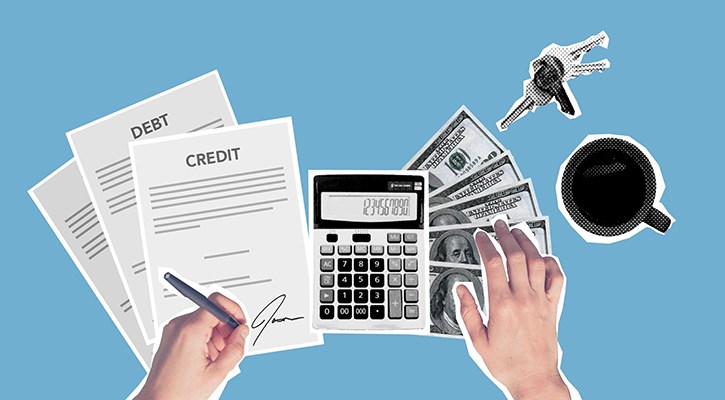
What should you do when your current mortgage deal is coming to an end? The line of least resistance is to drift onto your lender’s standard variable rate (SVR) when the deal finishes.
A much better option is to look at other deals on offer from your existing lender. You should find something cheaper than the SVR, and it will be quicker and simpler to implement than if you went to another lender.
However, as Nick Morrey, technical manager at mortgage broker Charcol, points out: “The downside is that it’s pretty unlikely the ‘product transfer’ rates offered by your existing lender will be cheaper than the whole-of-market remortgage rates.”
If you’re keen to save as much as you can, remortgaging - switching to a new mortgage deal with a different lender – can make a big difference.
How Remortgaging Saves You Money
To put that into context, Morrey gives the following example: “If you have a £200,000 mortgage (repayment for 25 years) costing £848 a month on a 2% interest rate, you’re likely to go onto an SVR of something like 3.99%, pushing your monthly repayments up to £1,055 a month if you do nothing.
But if you remortgage to a two-year fixed rate (currently from 1.1% with Santander, with a £999 fee, free valuation and free standard remortgage legal service) then those payments could be cut to £763 a month. That extra monthly saving of £85 could then be used to overpay the mortgage and clear it as much as three years early.
Remortgaging to a better deal at the end of your current one is an obvious step. But it is not the only time to consider switching - even though you may have to pay an early repayment charge (typically 1-5% of your loan) to leave the deal you’re on. You’ll need to do the maths to work out whether it’s worth paying that penalty to switch mortgages.
When to Remortgage
Your House Price Went Up
If your home has significantly increased in value, the amount of equity you have in the property increases. As a result, you may be able to get a cheaper deal in a lower loan-to-value (LTV) bracket. You can calculate LTV by dividing the value of the mortgage by the value of the property and multiplying by 100.
So, say you have a £150,000 loan and the value of your home has risen from £180,000 to £200,000 since you took it out, the LTV has improved from 83% to 75% and you’ll qualify for much better deals.
Your Rate is Rubbish
You may find that you're on a relatively uncompetitive rate and want to move to a cheaper one before the end of the deal (likely to make particular sense if you have a large debt). This might occur if, for example, you took out your mortgage before interest rates were cut and the best deals of the market have subsequently become cheaper.
You might also decide you want a mortgage with greater flexibility - perhaps you're currently on a fixed rate but would prefer an offset or tracker mortgage, so you can more easily make overpayments. We've previously written about how to choose the right mortgage for your circumstances and whether overpaying your mortgage makes sense.
You Need to Free Up Money
Some people remortgage to free up money in order to pay off other more expensive debts or to release equity (value) from their home, rather than to reduce the cost of borrowing – particularly if the property has gained a lot of value.
They do this by borrowing more than the value of the outstanding debt and using the extra cash either to clear other debts or to spend elsewhere. However, it’s clearly not a good idea unless you have built up plenty of equity in the property and the extra borrowing won’t affect the LTV on the new deal. Even then, it’s not something to enter into lightly, as you will be borrowing more and could end up paying more interest over the long term.
How to Remortgage
So when should you start the remortgaging process? Mortgage offers are only valid for a maximum of six months (and taking a new product from your existing lender cannot usually be done more than a month in advance).
Morrey recommends that because mortgage rates are at record lows, getting a remortgage application underway should be done potentially six months before the current deal ends to lock in the rate you want. But do ensure the offer expiry date is beyond the end date of your current mortgage product.
“It makes sense to start early because you secure the product when you submit the application, and if rates increase in the interim you will be very glad you did,” Morrey adds.
If rates go down rather than up, ask the lender if they will swap it to the new lower rate. “It is worth checking before submission that this is something the lender allows – not all do. If they do not allow it, you may still have time to submit a fresh application for the cheaper deal,” he cautions.
To find the best deal to suit you, you could use a comparison site such as moneyfacts or Which?. Or you could use a mortgage broker: they will advise on the best options and do the maths and the legwork for you. They may also have access to exclusive deals not available on the comparison sites.
What to Consider
Apart from the rate and terms of any mortgage you’re considering, you also need to look closely at costs, including early repayment charges if you’re planning to leave your current deal early.
It’s quite possible you may not face any upfront costs. “Many remortgage products have a free valuation, a free standard remortgage legal service or a bit of cashback to pay for your own solicitors. What they do charge is a product fee of anything from £0 up to £2,000,” says Morrey.
The value of the product fee will depend on the size and term of your mortgage; the higher the fee, the lower the mortgage interest rate and vice versa. If you have only a small loan, a slightly higher interest rate is not such a big deal, but on large mortgages a low rate becomes the all-important consideration and fees are secondary.
“As a rule of thumb, then, for smaller mortgages (below £150,000), a deal without a fee is likely to be best. For mortgages above £150,000 to about £250,000 a product with a £999-£1,499 fee is likely to be best, and above £250,000 a fee of about £2,000 could be best,” Morrey explains.


























